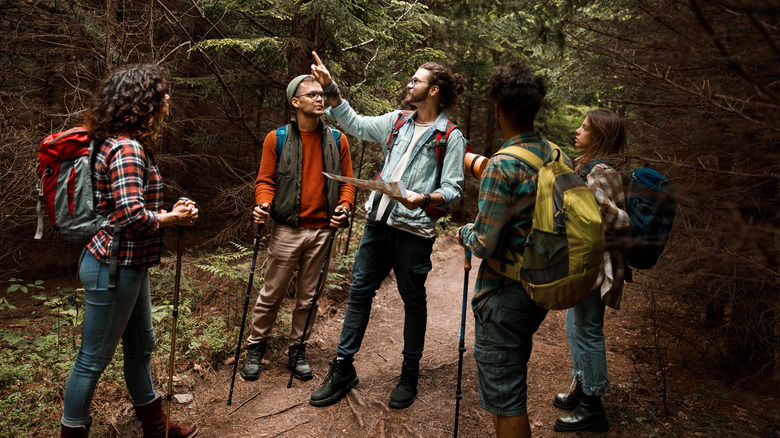The Most Common Ways That People Get Lost In The Woods, According To A New Study
According to the Outdoor Industry Association, the number and diversity of people participating in outdoor recreational activities in the United States continues to grow. Unfortunately, not every outdoor excursion goes as planned and thousands of people get lost while hiking, biking, camping, paddling, and adventuring outdoors throughout North America each year. A study by SmokyMountains.org took a deeper look at how these individuals came to find themselves lost during their outdoor outings.
Data from that study shows that nearly half the people who became lost (41%) wandered off the trail. The second-most common cause was bad weather (17%), followed closely by falling off the trail (16%). Rounding out the reasons people end up getting lost are getting separated from a group (8%), injury (7%), darkness (6%), and equipment failure (5%).
Given this information, it is obviously a good idea to know what steps to take if you become lost in the woods. Equally important is to know how you can prevent getting lost in the first place. To that end, being aware of the most common ways that people get lost in the woods can help as you prepare for your next outdoor outing.
How to avoid getting lost in the woods
When you take into account the majority of people who become lost by wandering off the trail, it underscores the need for having a plan and sticking to it when adventuring outdoors. This is particularly true if you are going on a solo hike, as there will be no one else there to help you if you get off course. A planned route should be part of your preparation even if you are going on a short day hike, because, according to National Geographic, the vast majority of people who become lost are day hikers.
Even with a good plan, it is important to have navigation tools, such as an orienteering compass, on you at all times. Additionally, considering weather conditions are the next most common cause for becoming lost, it is important to check weather forecasts and be prepared for the unexpected with ample foul weather gear. To address the other main causes, injury and darkness, your emergency gear pack should always include an ample first aid kit, such as the EverLit Survival First Aid Kit, and a reliable flashlight. You should also have extra batteries for electronic devices, as well as spares and backups for any essential equipment.

